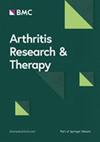时间和D2T-RA大理石花纹定义揭示的真相:难治性RA患者难治状态持续存在的回顾性分析
IF 4.9
2区 医学
Q1 Medicine
引用次数: 0
摘要
目前EULAR对难以治疗的类风湿关节炎(D2T-RA)的定义是指在单一时间点对多种治疗方法难治的活动性疾病患者,而不考虑这种疾病在一段时间内的持续性。该研究旨在评估12个月内的难治性类风湿性关节炎(D2T-RA),考虑的是现实生活中队列的长期持续性,而不是单一的时间点。在单个中心的真实队列中,每个患者的人口统计学和临床数据都是在基线时横向收集的,并在过去的 12 个月中每两个月回顾一次。在每个时间点计算D2T-RA患者的患病率,符合EULAR定义至少6个月的患者被定义为持续性D2T-RA(pD2T-RA)。最后,分析了与基于时间定义的 pD2T-RA 相关的临床特征。在610名成年RA患者中,有104人对≥2种治疗方法均无效。最初,41.3%的患者符合D2T-RA标准,但只有27.9%的患者在6个月内符合持续D2T-RA(pD2T-RA)标准。pD2T-RA组与男性性别、较高的HAQ和Charlson综合指数评分、较多的治疗失败以及使用非NSAID镇痛药有关。逻辑回归将 pD2T-RA 与较高的 SDAI 和 CRP 值以及使用糖皮质激素或镇痛药联系起来。长期使用糖皮质激素与 pD2T-RA 密切相关。应用时间性标准可筛选出 pD2T-RA 患者亚群,他们不同于仅在偶发情况下符合 D2T-RA 定义的患者。长期使用糖皮质激素是与 pD2T-RA 状态最密切相关的因素。对这一主题已有哪些了解?自从确定了 D2T-RA 的定义以来,人们已经做了很多努力来描述这个亚群的发病率以及临床和人口学特征。然而,迄今为止,还没有任何研究关注过 D2T-RA 状态在时间上的维持情况。本研究有何新意?根据 D2T-RA 状态的时间轨迹,提出了持续性或发作性 D2T-RA 的定义,结果约有 27% 的 D2T-RA 患者持续符合 pD2T-RA 的定义。在每个单一时间点,D2T-RA 患者中有三分之一为发作性 D2T-RA 患者。这会对临床实践产生什么影响?持续性 D2T-RA 定义可能会使 D2T-RA 患者进一步同质化。本文章由计算机程序翻译,如有差异,请以英文原文为准。
Truth unveiled by time and the marbled definition of D2T-RA: retrospective analysis on the persistence of the difficult-to-treat status among refractory RA patients
The current EULAR definition of difficult-to-treat rheumatoid arthritis (D2T-RA) identifies patients with active disease refractory to multiple treatments at a single time point, without considering the persistence of this condition over time. The study aimed to assess difficult-to-treat rheumatoid arthritis (D2T-RA) over 12 months, considering persistence over time rather than a single time point, in a real-life cohort. In a single-center real-life cohort, demographic and clinic data were cross-sectionally collected for each patient at baseline and retrospectively over the previous 12 months bimonthly. For each timepoint, the prevalence of D2T-RA patients was calculated, and patients meeting the EULAR definition for at least 6 months were defined as persistent D2T-RA (pD2T-RA). Finally, the clinical characteristics associated with the time-based definition of pD2T-RA were analyzed. Among 610 adult RA patients, 104 were refractory to ≥ 2 treatments. Initially, 41.3% met D2T-RA criteria, but only 27.9% fulfilled persistent D2T-RA (pD2T-RA) criteria over 6 months. The pD2T-RA group was associated with male gender, higher HAQ and Charlson Comorbidity Index scores, more failed treatments, and use of non-NSAID analgesics. Logistic regression linked pD2T-RA to higher SDAI and CRP values, and the use of glucocorticoids or analgesics. Chronic use of glucocorticoids was strongly associated with pD2T-RA. The application of a temporal criterion allowed for the selection of a subgroup of pD2T-RA patients who differ from those who meet the definition of D2T-RA only episodically. Chronic use of glucocorticoids was the factor most strongly associated with pD2T-RA status. What is already known about this subject? Since the institution of the D2T-RA definition, many efforts have been made to characterize this subpopulation's prevalence as well as clinical and demographical features. However, no studies have so far faced the temporal maintenance of the D2T-RA status. What does this study add? A definition of persistent or episodic D2T-RA is proposed according to the temporal trajectory of D2T-RA status, resulting in approximately 27% of D2T-RA patients persistently fulfilling the pD2T-RA definition. At each single time point, one-third of D2T-RA patients are represented by episodic D2T-RA patients. How might this impact on clinical practice? Persistent D2T-RA definition may serve to further homogenize the D2T-RA population.
求助全文
通过发布文献求助,成功后即可免费获取论文全文。
去求助
来源期刊

Arthritis Research & Therapy
RHEUMATOLOGY-
CiteScore
8.60
自引率
2.00%
发文量
261
审稿时长
14 weeks
期刊介绍:
Established in 1999, Arthritis Research and Therapy is an international, open access, peer-reviewed journal, publishing original articles in the area of musculoskeletal research and therapy as well as, reviews, commentaries and reports. A major focus of the journal is on the immunologic processes leading to inflammation, damage and repair as they relate to autoimmune rheumatic and musculoskeletal conditions, and which inform the translation of this knowledge into advances in clinical care. Original basic, translational and clinical research is considered for publication along with results of early and late phase therapeutic trials, especially as they pertain to the underpinning science that informs clinical observations in interventional studies.
 求助内容:
求助内容: 应助结果提醒方式:
应助结果提醒方式:


